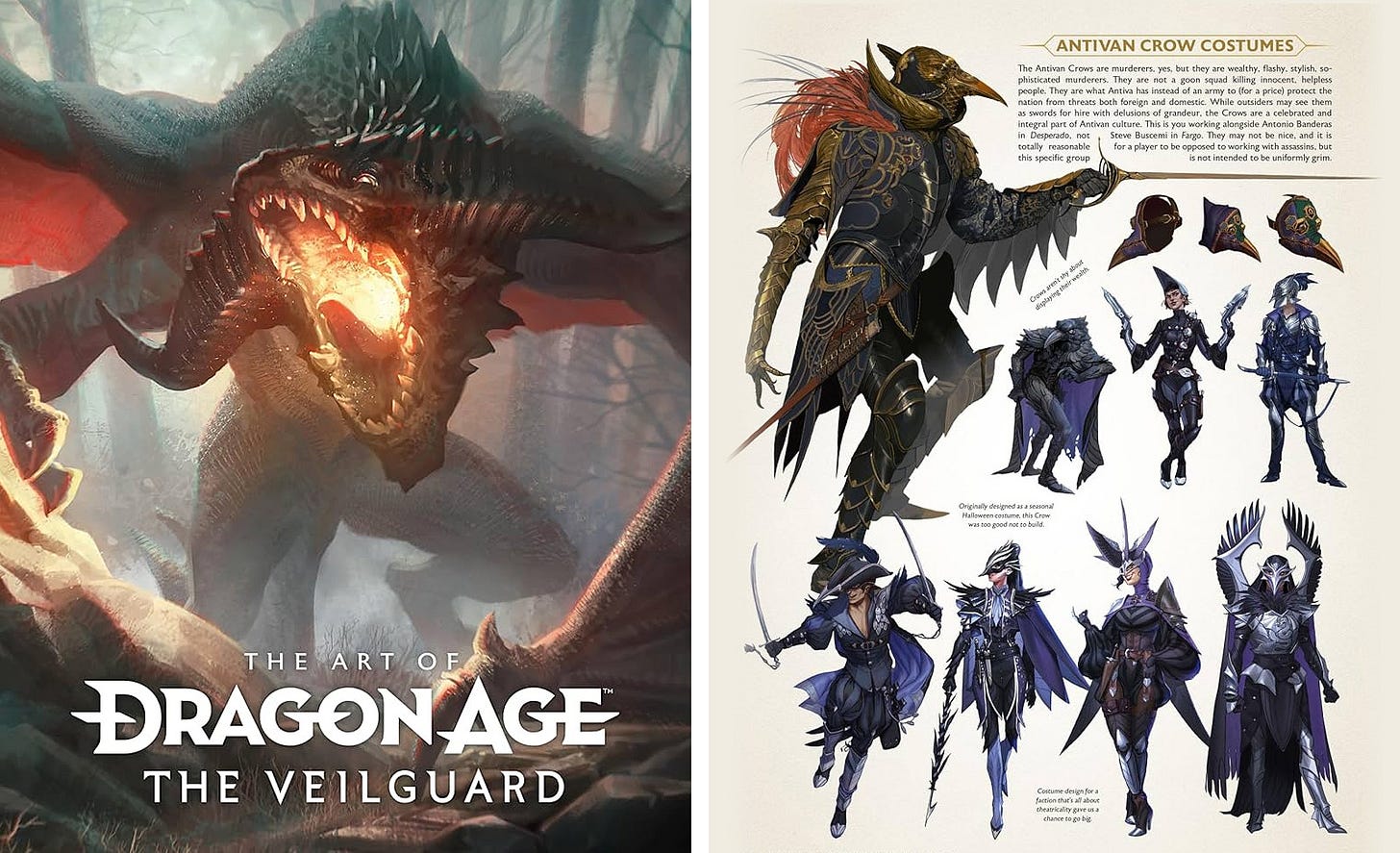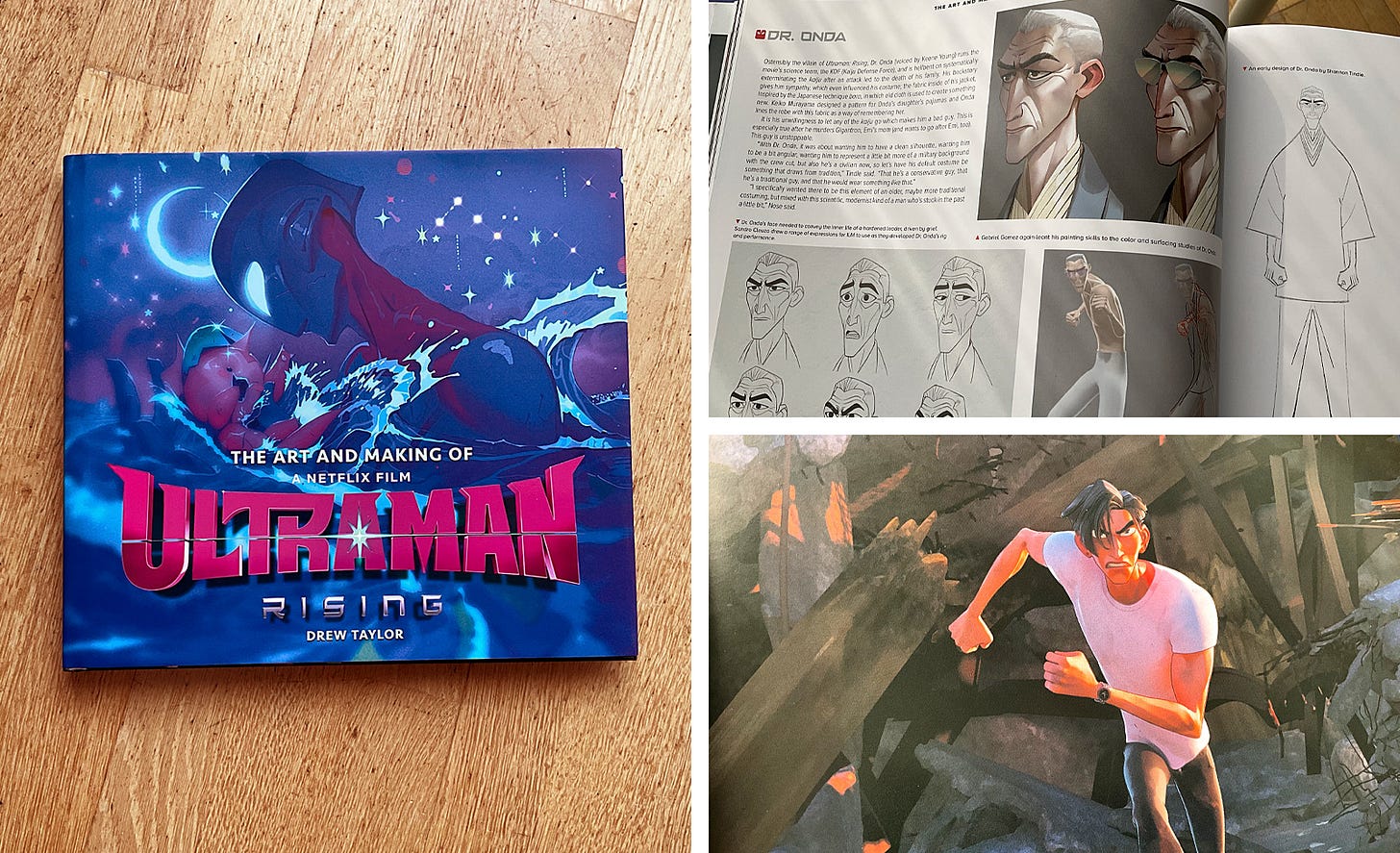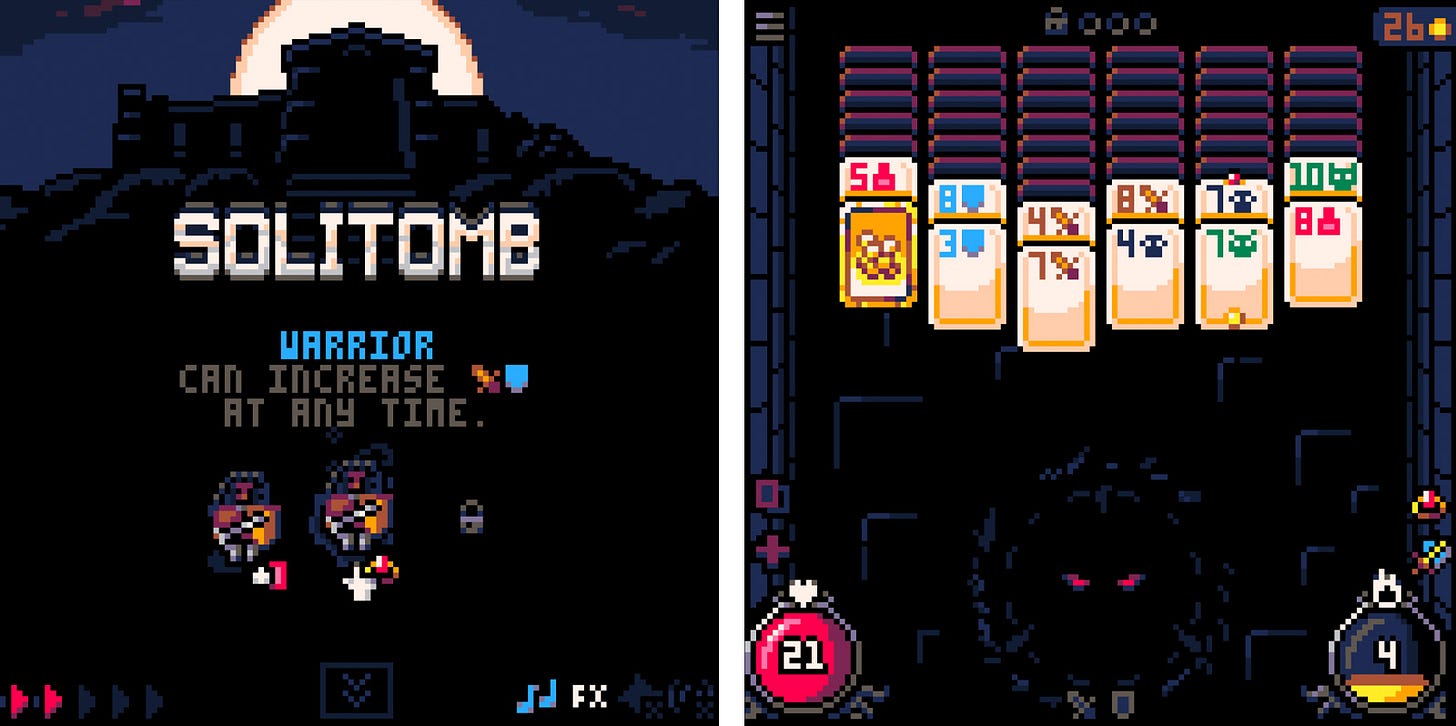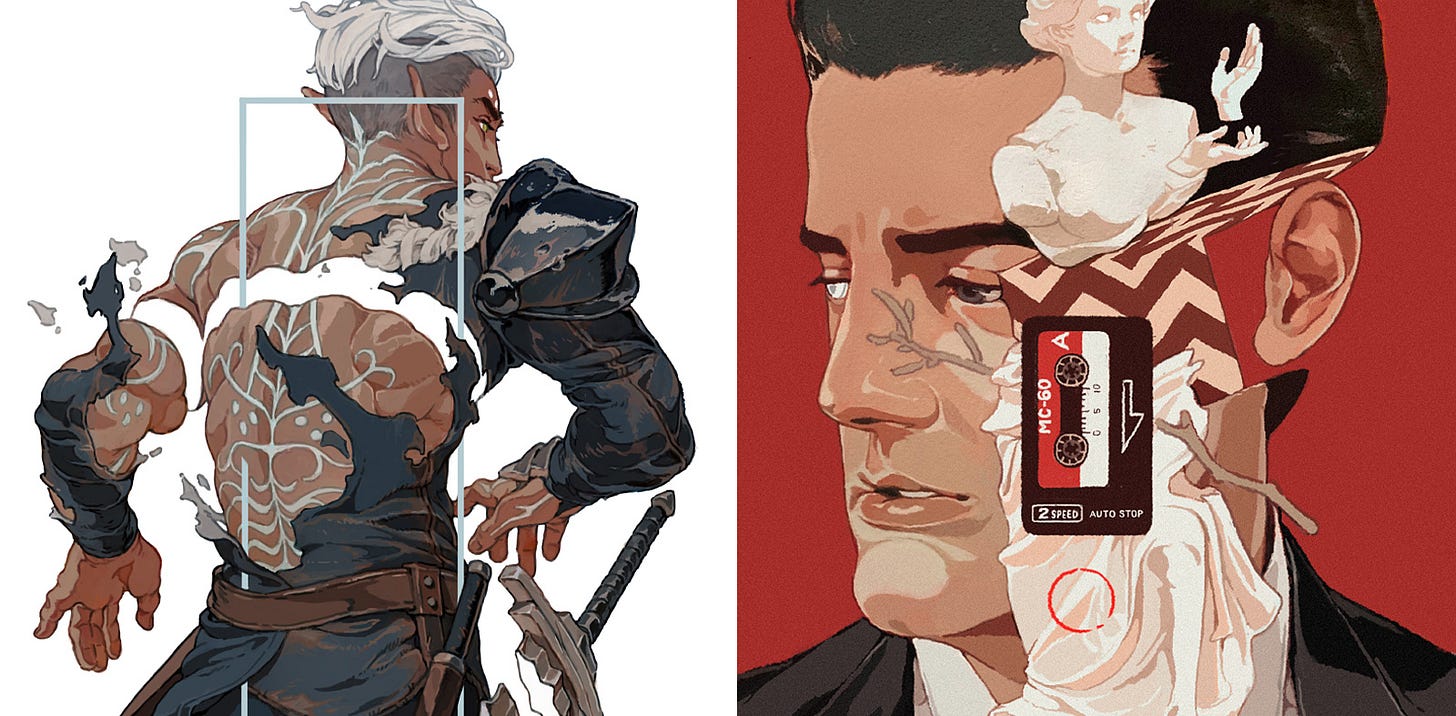First ITC of the year, so: happy 2025! This should have been a more work-related one, but some things are in the works, so let’s start with some recommendations preceded, as usual, by a brief anecdote/reflection. Enjoy!
→ Reflections
One of the soundtracks that has accompanied me the most over the last twenty years is the VtM Bloodlines OST from 2004 (about to receive its second part). For years it was my personal soundtrack when walking through lonely streets at night.
Its composer, Rik Schaffer, was in a dark and difficult place when he worked on it. After years of playing music in different bands, touring gigs and enjoying nightlife, his drug problems became more serious than he anticipated.
He ended up in jail, and after getting rehabilitated and released, all that was waiting for him outside was $15, a beat-up car (in which he lived for weeks), and his girlfriend at the time, Margaret Tang, who was pregnant.
In an interview, he stated that at that moment he looked and felt like any of the homeless people who appear wandering the dark alleys of the game.
Through a contact, he managed to get in touch with Troika Games and got the project. A colleague who lived in Hollywood offered him a rickety sofa and it was there where he started writing music again. The first thing that came out of his guitar was the theme for the Hollywood Hub, the third major setting in the game, after Santa Mónica and downtown.
The Hollywood theme, with its dense tempo, its guitars and distortions, is the perfect combination of glamour, decadence, darkness and sorrow… but it still contains hope. Exactly what you might expect from a musician in that situation, and exactly what Hollywood needed.
Not only was Rik's music essential to creating the atmosphere of the revered RPG, but the work of the voice actors, led by his now wife, Margaret, was recognised for years as one of the best ever recorded in the industry, and one of the keys to the game's cult status.
I've never been too fond of the tortured artist archetype, but I think genuine works of art, born from the heart of their creators, with all their shadows, echoes and frustrations, truly torn from their developing identities, especially in the most complicated moments, are endowed with an inimitable halo that seems destined to reach other people.
P.S.: If you’re interest in this OST, apart from the Hollywood theme, Rik has fond memories of the Chinatown theme, also one of my favourites :-)
Recommendations
1 → Art books
The Art of Dragon Age: Veilguard
Dragon Age is one of my favourite RPG sagas of all times. It just has(had) the right balance between pure action, story, character development and relationships… But it has had a complicated evolution in the last fifteen years.
After the masterful Origins, Dragon Age 2 pointed to a different direction that was not universally welcomed, then Inquisition was launched and, in a way, recovered a lot of its original essence, while bringing a few new problems. But apparently, Veilguard has decided to throw away part of what made the series recognisable and popular, creating something… different.
More action-based, far, far less deep in terms of writing, and definitely using a less mature general tone which some have considered to be not very brave, to say the least. And a ridiculous display of bad writing in some others. Its future is uncertain and not very bright, considering sales.
But there is one thing that all Dragon Age titles have consistently excelled at: their stunning art and design. Rich and influential in the world of fantasy. I’ve always admired their costume design work. Although I have not played Veilguard yet, I have been able to enjoy this impressive volume packed with top-quality production design. A must-have if you like fantasy in general.
The Art and Making of Ultraman Rising
We talked about Ultraman Rising some months ago. I'm not sure how much of an impact this movie had on Netflix. I feel like it hasn't been talked about enough, but considering the team involved in the film, I decided to pre-purchase the art book when it was announced months ago.
The book doesn't disappoint and is full of wonderful glimpses into the pre-production process. The character design parts are specially interesting, although a little bit short for my taste. If you liked the film, the book is indispensable.
2 → Games (Indie-retro-dungeon mini-selection)
Tiny Rogues
Tiny Rogues is one of the most minimal, retro-looking rogue-lites I’ve ever played. However, it’s established itself as one of the greatest of all times in the genre. Overwhelmingly positive reviews on Steam, and an impressive and almost unmanageable number of classes and variables make this title an addictive machine.
Solitomb
It's amazing that we're still able to make something different out of the solitaire concept. Solitomb presents another twist where each card you remove from the board can be a consumable in the dungeon or an enemy to beat, with the inclusion of card combos, character classes with special characteristics, and essentially a card 'execution' system.
It sounds complicated, but it's pretty straightforward once you learn it. And, in my humble opinion, a small masterpiece in game design. Extremely challenging, though!
Designed for Pico-8 (but playable on PC, Mac and Linux) with all its logical technical restrictions. You can play it on itch.io for free, contribute a few dollars if you want, and/or wishlist the upcoming Steam adaptation while you're at it.
3 → Films & series
The Expanse
I'm extremely late to the party, but after several recommendations and passionate reviews from fans, I decided to give this series a chance. It was born on SyFy ten years ago, only to be on the verge of cancellation and then rescued by Amazon. Based on the novels by James S. A. Corey.
I think that like Altered Carbon, The Expanse does a great job combining science fiction with a rather detective-like plot, along with a whole political-social layer that ends up creating a great story.
The scientific approach to questions such as: 1) The physiological development of human beings who have been born and raised in different gravitational conditions, 2) How the body is affected by moving at the speeds necessary for traveling over large distances in space, or 3) How the different space colonies evolve socially and culturally, among other issues, have been dealt intelligently. I can definitely understand why it has attracted a small legion of fans. For all that has been said and… for Miller. Oyedeng, belta.
You can watch it on Amazon Prime (but you’ll have to read the novels to get to an actual ending).
The Dragon Prince
We recently watched the conclusion of the second (and in theory last) arc of this animated saga from Bardel Entertainment, produced by Wonderstorm, which began airing in 2018.
Personally, I think that the last seasons have been much less concrete and effective than the first ones, with a slow and indecisive progress, but still full of memorable moments. And while the last one has brought back much of the original fascination of the saga, the… abrupt and clearly open final left me wanting much more. Again, lights and shadows.
But to be fair, The Dragon Prince occupies a very interesting target of fantasy, with a mostly young audience and I am sure that it will be THE fantasy reference for a whole generation of young people who watched it while they went from childhood to adolescence between the years 2018 and 2024.
A possible third arc has been hinted, with three additional seasons that could happen in the future, but at the moment nothing is confirmed. You can watch the entire series on Netflix.
4 → A Newsletter: Honos
I’m rescuing this paragraph from one of the last issues of Honos, a newsletter I’ve recommended in the past, titled “Designing in the time of the generative”:
Today, those of us who are dedicated to design are faced with a methodological change that, if generalised, could replace the current paradigm of designing as “understanding.”
It turns out that artificial intelligence models such as ChatGPT or Gemini offer a different game mechanic: a question-and-answer dynamic. Instead of an interdependent coevolution of problem and solution, what is proposed is a dissociated input/output exchange.
On the human side, an explanation of the problem is presented in the form of a command and, for its part, the artificial model returns an explained proposal. This flow, although powerful in its efficiency, lacks the relational depth that characterises the process of designing “understanding.”
(Clumsily translated, sorry.) You can read the whole article here. If you can read Spanish, consider subscribing to Honos. Máximo is a great designer and, perhaps, an even better thinker.
5 → A typeface: Being
A beautiful, heavy, solid typeface with 9 weights plus italics. Designed by Rajesh Rajput. Ideal as a display font for impactful graphics. Let’s see if we can recover little by little the era of good, brave typography. And just $30+! Note: If you need an alternative blocky font, more condensed, affordable, but also limited to a single weight, check Arilla Type’s At Roca.
6 → Artists
Sachin Teng
Taiwanese American artist Saching Teng has been working as a professional illustrator for more than ten years, working for different industries (publishing, advertising, editorial, animation…). I discovered her work via the beautiful, striking covers she designed for the different Dragon Age comic book sagas. She studied Communication Design at Pratt Institute and you can tell her work is extremely versatile and diverse although, in my opinion, her beautiful characters, the lovely use of colour, and the intricate compositions are her strong points.
Sara Kipin
I have been following Sara Kipin's work almost since the beginning of her professional career. Her love for fantasy, animation and character design has led her to work mainly in the animation industry, in character design, colour design, and storyboards in amazing shows such as Samurai Jack, Scavengers Reign, Trese, Twilight of the Gods or Pantheon, among others.
Her growing involvement as a character designer for the video game field and some forays into the comics industry are not to be underestimated. An impressive career for someone so young. Take a look at her portfolio and you will love it, although unfortunately most of her professional work is under NDA for obvious reasons when you work for Pixar, Warner Bros or Nickelodeon.
7 → Music
Sing by Blutengel
I discovered Blutengel, the project of German musician Chris Pohl, via friends from the gothic, EBM and Darkwave scene… One of the first tracks I listened to was Über den Horizont (2011).
Although I have always found his music and aesthetic a bit naive, this man sings, plays, produces, designs and, ultimately, is a complete artist. His productivity has also been intense, with eighteen albums between 2000 and 2019, no less!
Sing isn’t, perhaps, very representative of his general work in electronic music, but it’s one of his brightest and most accessible songs.
Sing for all the people that you've lost
For all the friends you used to trust
Sing for all the dreams you left behind
Vampires by Bat for Lashes
Not the first thing I’ve recommended by Bat for Lashes. And certainly, it won’t be the last one. This instrumental piece evokes aaaaall the magic of an era. The bouncing percussion, the atmosphere, the tune, the saxophone… Elegant and somewhat dark, but also hopeful. If you were born in the 80s, you need to listen to this piece. Appropriate The Lost Boys reference to her 2019 album Lost Girls.
Thank you for reading In the Cave. Currently, I’m using social media just to promote this newsletter, share other people’s work or send memes to friends. Nothing else. So if you like this newsletter, please share it and recommend it. You can also find me on my website or Dribbble.
See you next month!
Read a previous story:











